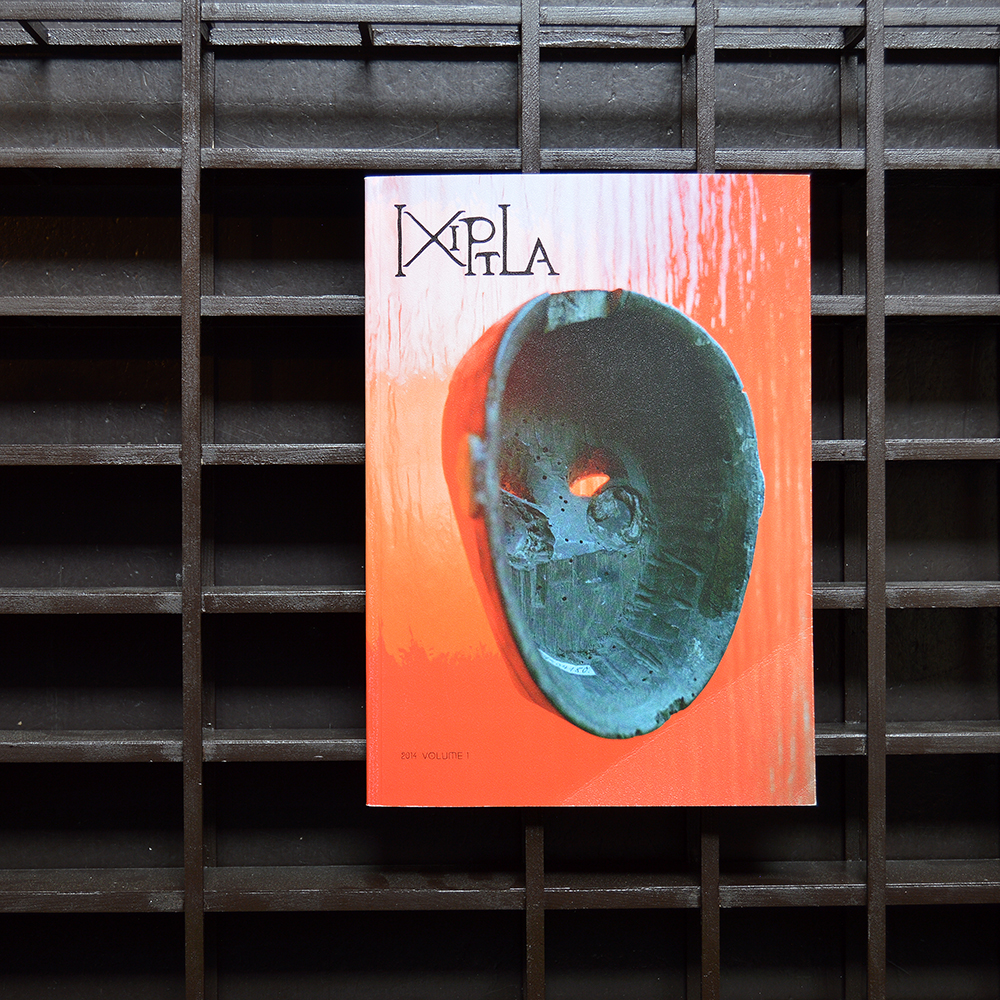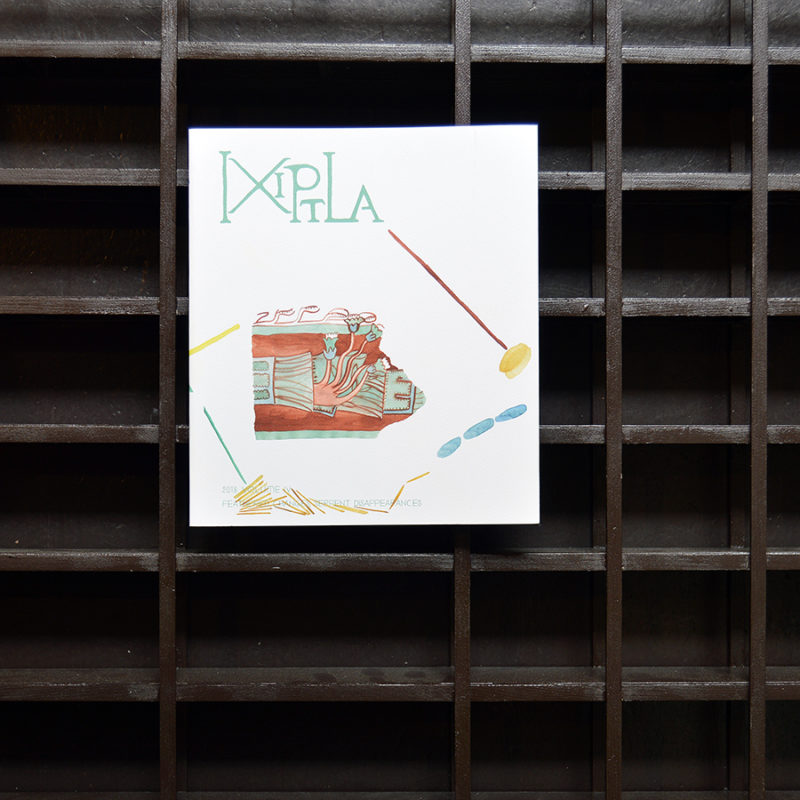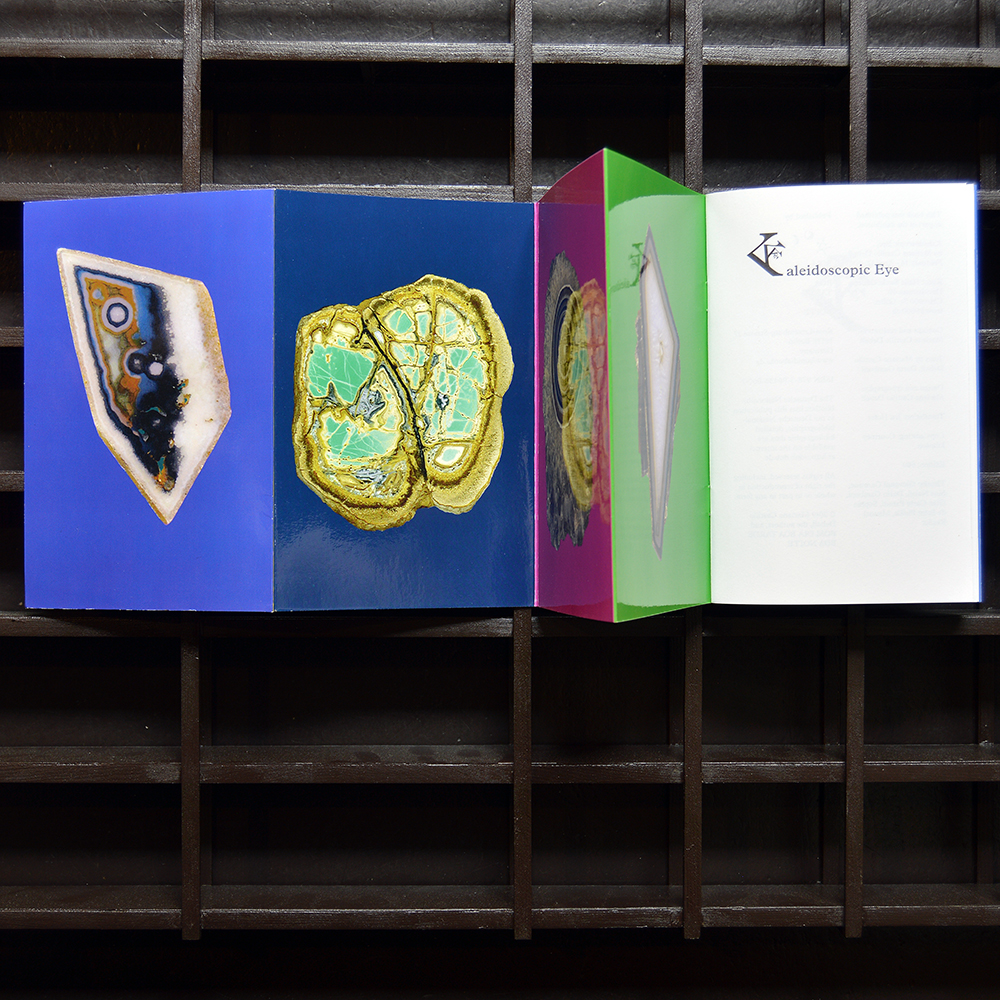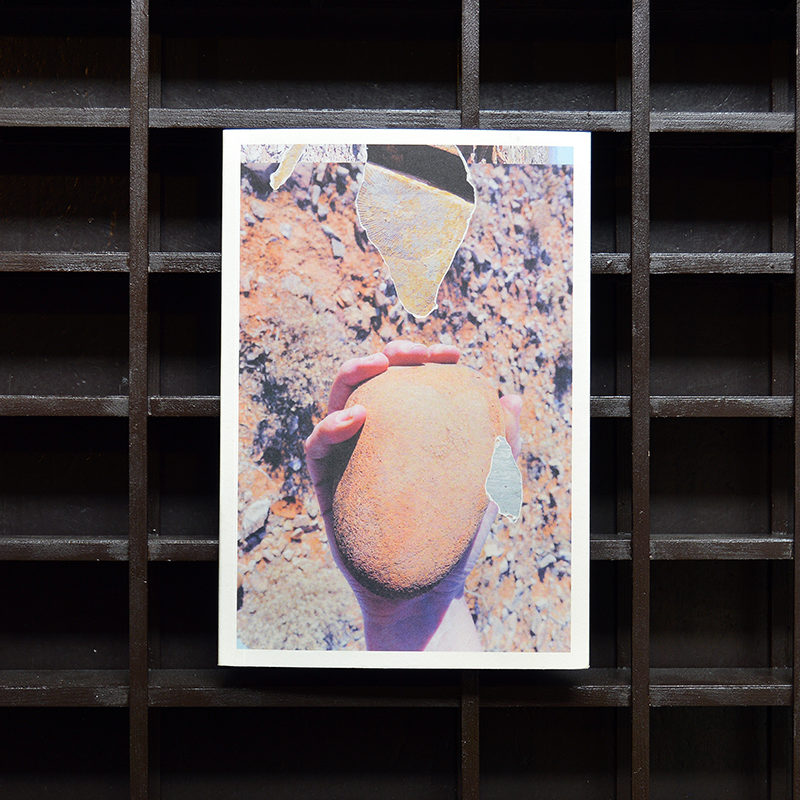** Our bookshop in Berlin-Mitte has closed ** Orders available only via www.bomdiabooks.de **

Ixiptla Volume I was published on the occasion of Expedite Expression, 8th Berlin Biennale for Contemporary Art in 2014. For this first issue, a group of anthropologists, archaeologists, artists, and writers have been invited to reflect on the role of the model, the copy, and reproduction in their areas of research and practice. This edition is focused on objects collected and produced by archeologists in an attempt to capture and replicate material evidences left by time. ↑ ↓ ↓
€19,00
SOLD OUT

Can we read an archaeological site through chance operations? Probably a different idea of time would evolve from this methodology. Feathered Changes, Serpent Disappearances explores the tension between indeterminacy and narrative in archaeology and art. On one hand, there is an attempt to record traces from the past in order to build up a coherent picture. On the other, we have a more schizophrenic way of dealing with memory, acknowledging ghosts, double visions, and multiple versions of history. ↑ ↓ ↓
€19,00

Kaleidoscopic Eye departs from an argument between André Breton and Roger Caillois. The confrontation arose from their discovery of Mexican jumping beans—beans that make sudden movements and leap into the air. Caillois conjectured that larva or some other animal was making the beans move. Breton rejected his theory, accusing Caillois of being a closed-minded positivist who negated the marvellous and the poetic in his attempt to find a rational explanation. For Breton, absolute or objective chance blurred the borders of rationality, proffering a chaotic and stimulating universe: convulsive beauty. Caillois wrote a letter ending the relationship with Breton, declaring his attempt to reconcile research with beauty. Caillois sought to examine chance, chaos, and the irrational with the goal of finding a pattern similar to the structure of coral. T his structure should combine, in one system, everything that had until then been systematically excluded—a structure capable of taking into consideration all the possible forms of reality. Kaleidoscopic Eye was first published as part of the exhibition Kaleidoscopic Eye, in 2009 at Kunst Halle Sankt Gallen, now republished in its second edition. ↑ ↓ ↓
€24,00

Replaying Life’s Tape explores a cycle of recent projects by the Berlin and Mexico City based artist Mariana Castillo Deball that take fossils and evolutionary trees as their subject matter, and departs from a research trip that she made to a significant fossil site in the Ediacara Hills of South Australia in 2018. Replaying Life’s Tape is also the first Australian exhibition of Mariana Castillo Deball at the Monash University Museum of Art, Melbourne (5 Oct – 7 Dec 2019). In this solo show, Castillo Deball presents a material and virtual recreation of the paleoecology of the Ediacaran Period, combining objects, sculptural display systems and viewing technologies to consider the relationships between site, time and history. ↑ ↓ ↓
€30,00

En algún lado y en ninguno is a compilation of poems by the jazz musician and poet Sun Ra (Alabama 1914 – Birmingham 1993), selected and translated into Spanish by Mariana Castillo Deball, Tania Islas Weinstein and Alberto Ortega. The adventure began in a library that looks like a spaceship, next to a monument in the shape of a burned marshmallow that celebrates the first atomic reaction generated by humans. A plaque in the monument suggests that the powerful energy should be used for beneficial purposes. Inside this lunar library is the Special Collections Centre at the University of Chicago, that keeps the archive of Alton Abraham – Sun Ra Collection, comprising the period 1822-2008. Alton Abraham (1927-1999), entrepreneur and hospital technician, was a friend and partner of Sun Ra, and throughout his life he collected manuscripts, ephemera, artifacts, photographs and audio-visual recordings of the work of Sun Ra and his collaborators. Within the archive, which occupies 48 m of linear shelf space (146 boxes and a large folder) we found Sun Ra’s wallet, containing his lawyer’s business card, the insurance receipt for his car, a cabalistic amulet, and a million dollar bill perforated in the center. We also discovered Sun Ra’s typed poems, with handwritten corrections and in various versions. His poems generate a parallel geometry, a world that is precise and ambiguous at the same time. A sidereal enthusiasm made us think that the translation of his poems into our mother tongue could bring us close to his cosmos, and simultaneously allow us to share them with the Spanish-speaking firmament. Selection and translation by Mariana Castillo Deball, Tania Islas Weinstein and Alberto Ortega. ↑ ↓ ↓
€20,00